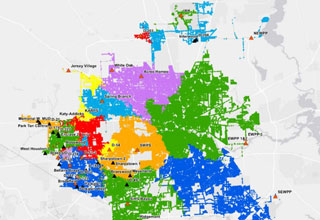Houston Public Works’ Journey Toward a Digital Twin (Source: AWWA Journal)
By Satish Tripathi, Melissa Mack, Amy Byland, Lynn Chamberlain, and Charles Shumate
Rapid advances have been made in hydraulic modeling capabilities since the introduction of EPANET hydraulic modeling software in the early 1990s. In a matter of minutes, utilities can optimize pump operations for energy efficiency, assess disinfectant residuals, and even predict future system behavior in real time with links to supervisory control and data acquisition (SCADA) feeds.
To take advantage of these kinds of functionalities, Houston Public Works began developing a digital twin to assist in master planning and operational support for its water distribution system in 2016. This combined water transmission and distribution system, one of the most complex in the world, delivers greater than 600 mgd of high-quality drinking water to more than 5 million people within the city limits and the surrounding areas. Providing this water takes three surface water treatment plants, seven repump stations, 39 groundwater plants, and approximately 7,500 miles of pipe that range from 0.5 to 120 inches in diameter. By the year 2040, it’s anticipated that Houston Water will provide greater than 1,000 mgd.
CLICK HERE TO READ COMPLETE STORY

